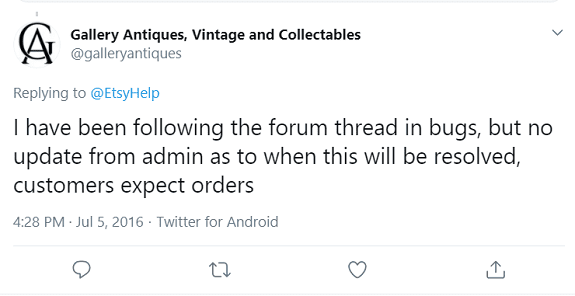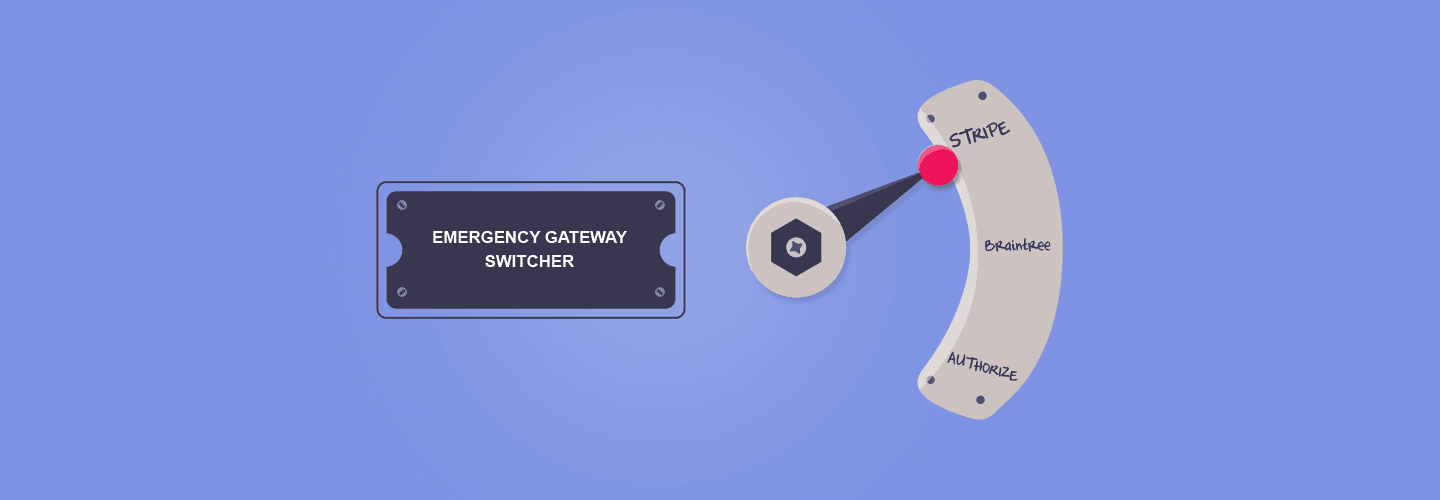Payment gateway outages are unlikely to happen but we cannot rule out the fact that even big payment gateways like Authorize.Net, Stripe, and PayPal occasionally have outages and most online businesses that solely depend on a single payment gateway stands to lose big.
Of course, these issues were resolved quickly. But for the entire period of the downtime, we weren’t able to process payments for our customers who were using these gateways.
After hours of poring over transactional data, analyzing and shooting out multiple emails, we managed to salvage the situation, to an extent.
But damn payment outages are annoying.
Not only do they lead to loss of revenue and increased churn, they’re also incredibly stressful for you, your team, and your users and customers.
The solution?
Multiple payment gateways.
This guide will give an overview of what payment gateways are, why SaaS companies need more than one, why payment failures happen, and what you can do about them.
To navigate quickly to the sections which interest you most, click the links below:
- What is a Payment Gateway and How Do They Work?
- Why Use Multiple Payment Gateways?
- Payment Gateway Emergency: Etsy During Two Blackouts
- Why Do Payment Failures Happen?
- What is failed payment recovery and why use it?
- What to Consider When Choosing a Payment Gateway Package
What is a Payment Gateway and How Do They Work?
A payment gateway is a service that both online and brick-and-mortar businesses use to process card and digital payments.
Its purpose is to secure the transaction by encrypting sensitive data while transmitting payments between the payment portal and bank.
So how does this process work?
When a transaction occurs on a payment gateway, it acts as the communication tool between the website or store, the payment processor, and the financial institution.
The primary reason for a payment gateway is to ensure the security of the data shared between the parties during transactions. It encrypts all information so hackers can’t access it (even if they did infiltrate the server).
Encryption is like a super password — it prevents hackers from opening up the files to retrieve data.
This process takes only a couple seconds, but there are several steps involved. If you like to dig deeper, here’s a detailed post explaining it all.
For instance…
A customer comes to your online store and clicks “Buy Now” to buy a product.
A secure payment page appears where they can input their credit card information.
The payment gateway encrypts the data and authorizes the payment from the issuing bank.
The bank sends authorization (or decline) to the payment gateway.
The payment gateway sends authorization to your website.
The transaction is approved, giving you the green light to fulfill the order.
It’s a process that simplifies digital payments and point-of-sale credit/debit card transactions in brick and mortars. With the right ones in your payment tech stack, you can improve your billing process efficiency.
And if you’re a SaaS company, then managing recurring payments without a payment gateway can become a real headache.
Why Use Multiple Payment Gateways?
As a business owner, you don’t want to operate in a constant reactive state. Being proactive about potential problems and roadblocks is vital to maintaining a competitive edge.
With that said, there are many reasons why proactively exploring multiple payment gateways is an optimal choice.
Let’s take a look at some of the top reasons.
1. Counter Potential Payment Gateway Outages
When there’s an outage, there are two main types of transactions that get affected:
- Subscription Renewals
- New Sign-ups
Let’s give you an example:
When those four payment gateways experienced outages (the ones we mentioned in the introduction) we paused all subscription renewals.
Which is easy, because we knew exactly when they were going to happen.
For the subscriptions which did go through the renewal and failed, we were able to recover them without a problem, (simply by clicking “retry” once the payment gateways came back online).
So that wasn’t a problem.
So what was?
New sign-ups.
You don’t know when a customer signs up for the first time. When new customers try signing up during an outage and hit repeated “Transaction Errors” their chances of coming back to purchase from you are minimal.
We were able to provide our customers with the email addresses for those who tried signing up. But could this have been avoided?
This is what we suggested to our customers: Multiple gateways. At the same time.
It never hurts to have some redundancy. Especially when it comes to onboarding new customers.
Say you have Stripe as your default gateway and Braintree as your backup (All new transactions happen via the default gateway unless specified otherwise).
Suddenly, Stripe has an outage. You realize this and quickly make Braintree your default gateway, thus routing all your new sign-ups via Braintree. And, you don’t end up losing new sign-ups!
Nothing spells smart like being proactive in case of an outage.
2. Optimize Payments for High-Ticket and Low-Cost Products
Another reason to use multiple payment gateways would be for different transactions, depending on the value.
If you use Chargebee’s API, you can specify a gateway in which a card must be stored.
So if your charges for specific products are about $100 and charges for other products are below $10, then you would want to save money by using different payment gateways.
It would be logical to use a payment gateway that charges less for micro-transactions and another gateway that may charge based on a percentage of the amount.
Intelligent routing does save you money.
3. Offer More Payment Options
When you offer your customers different payment methods like credit cards, ACH, EFT, etc., it enhances the customer experience.
You can route your customers to different gateways based on what payment option they choose.
Alternative payment methods can also be a safe fallback option.
4. Accept Payment in Multiple Currencies
If your company is incorporated in multiple countries, accepting payments in multiple currencies could be a problem.
Gateways that support a particular country’s local currency makes it seamless to support multiple currencies. This eliminates the headache of converting currencies.
Chargebee supports usage of multiple payment gateways, so go ahead and leverage the power of multiple options. Apart from multiple gateways for card payments, you can also accept your customers’ payments through alternative payment methods.
The more options, the merrier!
5. Improve Your Payment Success Rates
Sometimes, payments don’t process due to insufficient funds. In this case, you want to ensure you offer other payment options.
This will improve the odds of the customer finding a source with enough money to process the transaction.
You can also conduct A/B tests to determine which payment gateways perform better for certain types of transactions. This way, you can route those transactions to the best-performing gateway and reduce the odds of declined payments.
For example, Gocardless has only a 2.2% failure rate.
Also, some payment gateways may convert better (based on customer preferences). So be sure to test and analyze this as well.
6. Mitigate Risks by Balancing Payment Processing Loads
Having hundreds of thousands of people visiting your website and making purchases each day is something no business owner can complain about.
Except…when it comes time to process large volumes of transactions that lead to disruptions (and disgruntled customers).
It’s a double-whammy that can potentially hurt your reputation and future sales. By using multiple payment gateways, you can mitigate this risk by offloading the payments between several providers.
This way, you don’t have to worry as much about potential outages and delays caused by a large number of transactions happening once.
Payment Gateway Emergency: Etsy During Two Blackouts
Back in 2016, Etsy witnessed two disruptions with its payment processing system (Direct Checkout). The reason for the first blackout was that its vendor (WorldPay) was unable to process credit cards.
Then, to make matters worse, Etsy didn’t communicate with its sellers that they had to use Direct Checkout for PayPal checkouts instead of their own accounts.
This left sellers with no alternative payment method to process transactions.
And of course it was right before Valentine’s Day, so you can imagine the fear sellers felt about missing out on all the sales.
The second blackout lasted for five days (the same issue with the same vendor).
The only assurance was from Etsy, stating they were working on the issue.
Sellers were left to fend off angry mobs of customers complaining about delayed orders (including instant downloadable content) and refund processing:

Unfortunately, these issues didn’t go away on the fifth day — it lasted for several weeks. There was still a cycle of re-charges, refunds, and re-refunds as WorldPay tried to catch up with the millions of transactions in its backlog.

Needless to say, these issues are easily avoidable by using multiple payment gateways.
If this were to happen to your SaaS company, your churn rate would soar through the roof.
Why Do Payment Failures Happen?
Payment failures are like mosquitoes on a hot summer night. You expect them, but you definitely don’t want them. And while you can spray on DEET and fire up your mosquito coils, there’s always going to be a few that slip through.
But it’s not your fault — you did the best you can do.
And it’s the same with payment failures. Sadly, there’s no guaranteed silver bullet strategy to eliminate them.
So the next best thing is to understand why they happen.
Here are some of the top reasons:
- Payment gateway misconfiguration
- Payment gateway down
- Transaction not allowed by issuing bank
- Expired card
- Insufficient funds (or credit)
- Fraud detected by the issuing bank
- Card canceled by the issuing bank
- Information entered incorrectly
- Payment gateway doesn’t support payment method
- Closed account
- Card reported lost or stolen
- Credit card type isn’t accepted
Many of these aren’t the fault of the merchant.
However, if the issue is on your end (or the payment gateway’s), then you need to plan ahead to retain your customers.
What is failed payment recovery and why use it?
Failed payment recovery (or dunning management) is a mix of methods used by businesses to retrieve lost revenue caused by failed payments.
Dunning management consists of:
- Retrying failed payments
- Sending emails to the customer
- Enabling the customer to update payment methods
Retrying payment methods is a standard solution for subscription-based models. This involves retrying a payment method several times over a specified period.
For example, you may program the system to retry the payment method every 48 hours for a week before giving up. This can work if there are insufficient funds in the account, but will be replenished within a few days.
To be successful, you should segment your retry cycles based on the type of decline.
If you opt for dunning emails, then you’re reaching out to customers to ask for updated payment information. For example, suppose one of your subscriber’s accounts is flagged for a failed renewal. In that case, you can send an automated email to notify them to update their payment information.
It’s not ideal to use failed payments to trigger dunning emails. For instance, if the failed payment was at 2 AM, then you should wait until 2 PM to send the email (when they’re likely awake).
The last option is to use a card updater, which allows the customer to update their card details on their own. Some payment gateways offer this service.
What’s unique about this option is that it’s proactive — you’re contacting customers with cards that are about to expire. This way, you can prevent a declined payment.
The moral of the story:
By using payment recovery methods, you can recover up to 60% of unpaid accounts.
So, not all the mosquitos, but a damn site better than nothing.

What to Consider When Choosing a Payment Gateway Package
Alright, so it’s time to get your business equipped with reliable payment solutions. The key is finding a provider offering a payment gateway package.
This way, you can manage all of your accounts on a single platform.
But there are more than a few payment gateway packages out there, so which should you choose?
A few questions to answer before deciding:
- What payment methods do your customers prefer? Make sure the provider offers them.
- Will the checkout process offer a seamless experience? The fewer steps in the process, the better.
- Is the payment gateway simple to integrate? If not, you could end up spending extra time and resources setting it up.
- Is the gateway scalable with my business? The gateway should grow as your SaaS sales increase.
- Are the payment fees feasible? Be sure to have a mix of payment gateways that are ideal for high-value sales and micro-transactions.
Without the right tech stack for payments, you’ll find it’s harder to reduce churn rates caused by failed payments. Relying on a single payment gateway puts you at risk of downed systems, which can ultimately hurt your reputation and revenue.
By using a payment gateway package, you can offer your customers multiple ways to process their payments. And to ensure they stay customers, you can use dunning methods to boost recovered payments.
Chargebee offers multiple payment gateway solutions to SaaS businesses like yours. We also provide dunning management and account update services.
Reach out to learn how our alternative payment methods can help your SaaS business grow.
Update: We know how difficult a task it is to compare, weigh up, and pick out the payment gateway that will best suit your business. That’s why we decided to do all the heavy lifting, and have come up with, drum rolls please, this nifty payment gateway comparison tool to help you evaluate payment gateways specific to your country.

